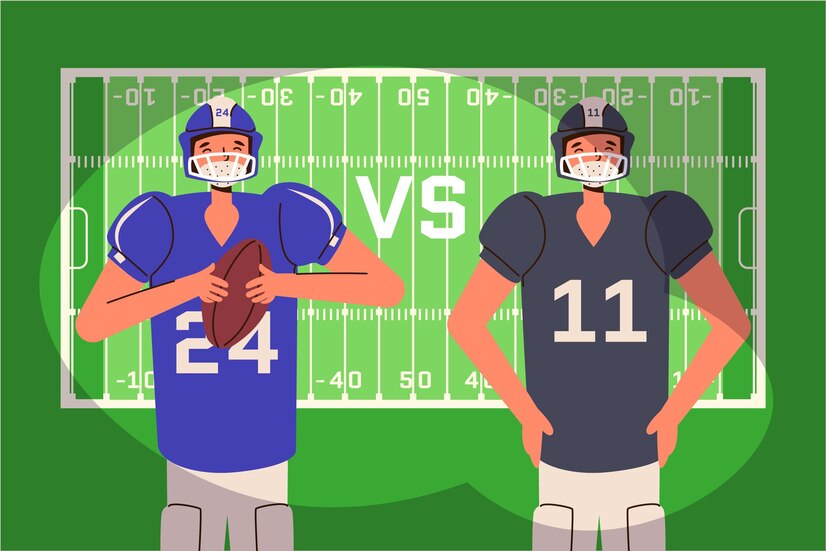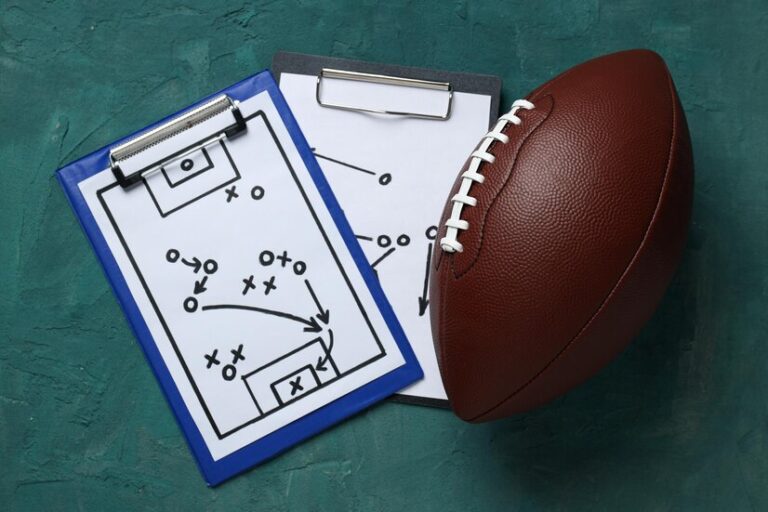The NFL playbook is the heart and soul of professional football teams. Packed with detailed strategies, diagrams, and tactics, it serves as a blueprint for how teams perform on the field. For football coaches, players, and enthusiasts alike, the NFL playbook represents the art (and science) of the game.
But what goes into creating these intricate documents? How have they evolved over time? And why do they remain indispensable in the modern game? This blog dives deep into the origin, evolution, and ongoing significance of NFL playbooks, giving you a detailed look at their unmatched role in professional football.
The Evolution of NFL Playbooks
Where It All Began
The first NFL playbooks were relatively simple. Early football strategies were built around foundational plays, focusing heavily on running the ball and basic formations. Teams relied on in-game adaptability and player intuition rather than highly structured strategies.
However, as the game evolved and passing became more prominent, so too did the need for detailed offensive and defensive schemes. Coaches began to develop plays to counter specific opponent tendencies, slowly transforming football into the strategic chess match it is today.
The Impact of Technology
Modern NFL playbooks don’t just reside in thick binders anymore—they’re often digitized and shared via tablets, ensuring players have access to them at any time. Coaches now use advanced tools to illustrate plays via 3D animations, creating realistic simulations to help players visualize in-game scenarios.
And with tools like game film analysis software, the process of building a playbook has never been more detailed. Coaches can break down opposing teams’ tendencies, pinpoint areas of advantage, and tailor their playbooks down to the smallest detail.
Breaking Down the Components of an NFL Playbook
An NFL playbook isn’t just a random collection of plays—it’s a meticulously organized document designed to address every aspect of the game. Here’s what typically makes up a complete NFL playbook.
Offensive Strategies
The offensive section is often the most detailed. It includes run plays, passing routes, protection schemes, and specific instructions for each position on the field. A single play diagram can involve multiple contingencies depending on defensive alignments.
For example, a play might instruct the quarterback to shift to Plan B (a quick slant pass) if the opposing defense shows a blitz formation. This adaptability is key to executing plays effectively under pressure.
Defensive Schemes
NFL defenses are equally complex, with their section outlining coverages, blitz packages, and assignments based on offensive formations. Coaches design strategies for every possible scenario—whether defending against a run-heavy offense or a dynamic, pass-focused attack.
Defensive playbooks also emphasize communication. Specific terminology ensures that all 11 players on the field know their role for a given snap, minimizing confusion during high-stakes moments.
Special Teams Tactics
Special teams play a crucial, often overlooked role in a team’s success. The special teams section of playbooks details everything from punt coverage assignments to fake field-goal plays.
This section is particularly unique, as special teams plays often require innovative tactics that can flip the momentum of a game in seconds.
Situation-Specific Plays
Many NFL playbooks contain plays dedicated to specific in-game situations. For example, a team’s “two-minute offense” or “red zone package” ensures they’re prepared for critical moments, like running out the clock or converting a pivotal third down.
The Art of Crafting an NFL Playbook
Creating an NFL playbook is a delicate balancing act. Coaches must create plays that highlight their team’s strengths while exploiting opponents’ weaknesses. This involves countless hours of analysis and teamwork.
Understanding Team Strengths and Weaknesses
A successful playbook reflects a clear understanding of the team it’s built for. For example, if a team has a mobile quarterback, the playbook will likely include more read-option plays. Similarly, a defense with standout pass rushers may lean heavily on blitz packages.
Tailoring Plays to Opponents
Coaches don’t simply rely on a stock set of plays for the entire season. Instead, they update and adjust their playbook weekly, preparing specific plays to target the unique tendencies of their next opponent. These adjustments make flexibility and adaptability critical for both players and coaches.

Collaboration is Key
While the head coach has the final say, playbook creation is often a team effort. Offensive and defensive coordinators, position coaches, and even players contribute ideas. Collaborative input ensures a well-rounded and adaptable strategy.
Learning and Executing NFL Playbooks
For players, learning the playbook is a massive challenge, particularly for rookies entering the league. The ability to memorize formations, routes, and responsibilities is often what separates great players from average ones.
Football IQ and Memorization
Memorizing an NFL playbook is no small feat. For example, a single play name like “Trips Right Flex 839 Buster” might include details on alignments, routes, and blocking schemes that must be understood by every player on the field.
Players with high football IQs—those who can quickly absorb, process, and apply this information during gameplay—offer tremendous value to their teams.
On-Field Communication
Executing a play successfully requires crisp communication, particularly in high-pressure situations like no-huddle offenses. Players rely on verbal signals, hand gestures, and even subtle movements to ensure everyone is on the same page.
Case Studies of Famous NFL Playbooks
Some NFL playbooks have become the stuff of legend, thanks to the groundbreaking strategies they introduced. Here are a few standout examples.
- Bill Walsh’s West Coast Offense
The late Bill Walsh revolutionized the NFL with his West Coast Offense. Based on short, precise passes and timing, Walsh’s playbook prioritized quick decision-making and allowed quarterbacks to make high-percentage throws. It’s still widely used today.
- The Chicago Bears’ 46 Defense
Buddy Ryan’s 46 Defense was an innovation that stifled offenses in the 1980s. By stacking defenders near the line of scrimmage, Ryan’s playbook created relentless pressure, leading to countless sacks and forced turnovers.
- Sean McVay’s Motion-Focused Offense
Sean McVay of the Los Angeles Rams has gained recognition for his emphasis on pre-snap player motion. His playbook uses movement to disguise plays and confuse defenses, providing a modern twist to offensive planning.
The Future of NFL Playbooks
Analytics Take Center Stage
With the rise of data analytics, teams are increasingly turning to AI-powered tools to optimize their playbooks. These tools can analyze thousands of scenarios to identify the most effective plays for specific situations.
Virtual Reality Training
Some teams have begun incorporating virtual reality (VR) technology into playbook training. VR allows players to practice and visualize plays in a simulated game environment, speeding up the learning process.
Positionless Football
The concept of positionless football—where players switch roles depending on the play—is gaining traction. Future NFL playbooks may reflect this shift, introducing even more versatile and unpredictable formations.
Mastering the Playbook, Mastering the Game
Behind every great NFL team lies a meticulously crafted playbook. It’s more than just a collection of plays; it’s a living document that evolves alongside the game itself. For players and coaches, mastering the playbook is essential to achieving success on the field.
Whether you’re a coach designing game plans, an athlete studying formations, or a fan fascinated by the strategy behind the game, understanding NFL playbooks offers a deeper appreciation for America’s favorite sport.
Feel inspired to explore more about NFL strategies or professional sports tactics? Stay tuned for deeper dives and additional resources to take your football knowledge to the next level.
